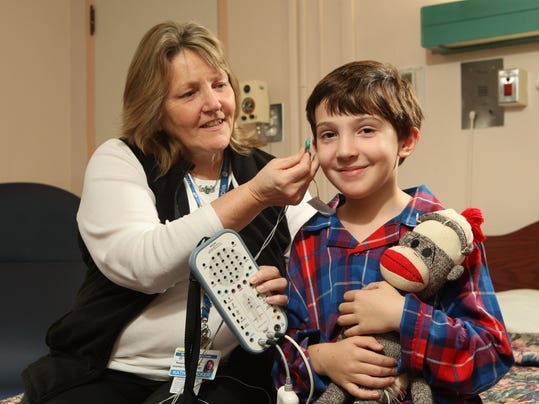Common genes were found to comprise of a person's genetic risk for autism.
Using new statistical tools, Carnegie Mellon University's Kathryn Roeder has led an international team of researchers to discover that most of the genetic risk for autism comes from versions of genes that are common in the population rather than from rare variants or spontaneous glitches.
Published in the July 20 issue of the journal Nature Genetics, the study found that about 52 percent of autism was traced to common genes and rarely inherited variations, with spontaneous mutations contributing a modest 2.6 percent of the total risk. The research team -- from the Population-Based-Autism Genetics and Environment Study (PAGES) Consortium -- used data from Sweden's universal health registry to compare roughly 3,000 subjects, including autistic individuals and a control group. The largest study of its kind to date, the team also showed that inheritability outweighs environmental risk.
"From this study, we can see that genetics plays a major role in the development of autism compared to environmental risk factors, making autism more like height than we thought -- many small risk factors add up, each pushing a person further out on the spectrum," said Roeder, professor of statistics and computational biology at Carnegie Mellon and a leading expert on statistical genomics and the genetic basis of complex disease. "These findings could not have happened without statistics, and now we must build off of what we learned and use statistical approaches to determine where to put future resources, and decide what is the most beneficial direction to pursue to further pinpoint what causes autism."
Although autism is thought to be caused by an interplay of genetic and other factors, including environmental forces, consensus on their relative contributions and the outlines of its genetic architecture has remained elusive, until now. With this new study, the researchers believe that autism genetics is beginning to catch up.
Led by Roeder, the researchers used new statistical methods -- such as machine learning techniques and dimension reduction tools -- that allowed them to more reliably sort out the inheritability of the disorder. In addition, they were able to compare their results with a parallel family-based study in the Swedish population, which took into account data from twins, cousins, and factors like age of the father at birth and parents' psychiatric history. A best-fit statistical model took form, based mostly on additive genetic and non-shared environmental effects.
"Thanks to the boost in statistical power that comes with ample sample size, autism geneticists can now see the forest for the trees," said Thomas R. Insel, director of the National Institute of Mental Health (NIMH). "Knowing the nature of the genetic risk will help focus the search for clues to the molecular roots of the disorder."
Thomas Lehner, chief of the NIMH's Genomics Research Branch, agreed and added, "This is a different kind of analysis than employed in previous studies. Data from genome-wide association studies was used to identify a genetic model instead of focusing just on pinpointing genetic risk factors. The researchers were able to pick from all of the cases of illness within a population-based registry."
Now that the genetic architecture is better understood, the researchers are identifying specific genetic risk factors detected in the sample, such as deletions and duplications of genetic material and spontaneous mutations. The researchers said even though such rare spontaneous mutations accounted for only a small fraction of autism risk, the potentially large effects of these glitches make them important clues to understanding the molecular underpinnings of the disorder.
"Within a given family, the mutations could be a critical determinant that leads to the manifestation of ASD in a particular family member," said Joseph Buxbaum, the study's first author and professor of psychiatry, neuroscience, genetics and genomic sciences at the Icahn School of Medicine at Mount Sinai (ISMMS). "The family may have common variation that puts it at risk, but if there is also a 'de novo' mutation on top of that, it could push an individual over the edge. So for many families, the interplay between common and spontaneous genetic factors could be the underlying genetic architecture of the disorder."
Current studies have not been large enough to reveal the many common genetic variants that increase the risk of autism. On their own, none of these common variants will have sufficient impact to cause autism.
"Our group in Pittsburgh is working to develop a model that predicts the genetic risk for a family based on a myriad of small effects. Such a score could provide clinical benefit to families," Roeder said.
 A study shows that losing sleep can hurt a person's memory.
A study shows that losing sleep can hurt a person's memory.














